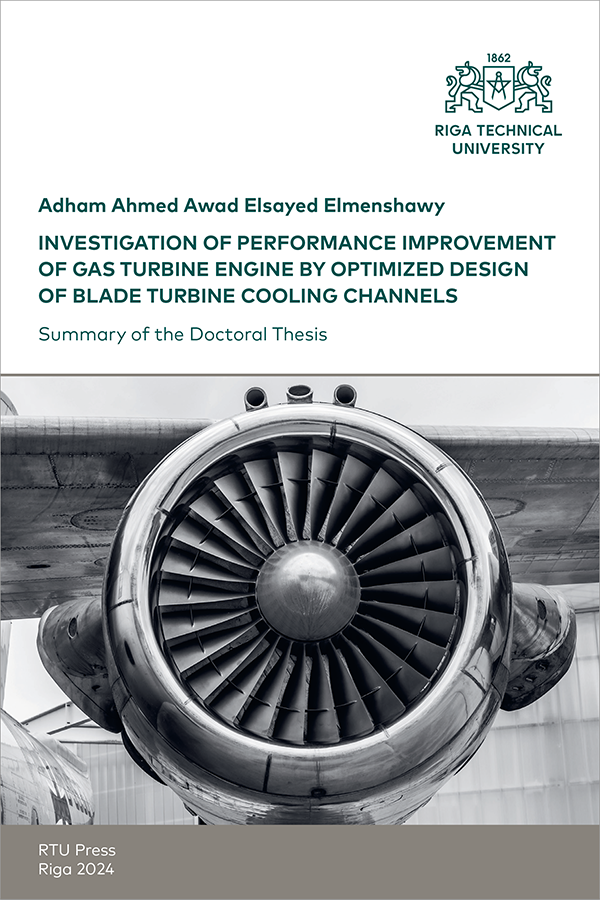Investigation of performance improvement of gas turbine engine by optimized design of blade turbine cooling channels
Summary of Doctoral Thesis
Adham Elmenshawy, Riga Technical University, Latvia
This Doctoral Thesis focuses on the critical challenge of cooling turbine blades in gas turbine engines, a component exposed to extreme temperatures and thermal stresses during operation. Predominantly, these blades experience intense heat due to fuel combustion in the engine’s combustion chamber, necessitating efficient cooling methods to prevent overheating and failure. A key aspect of this research was the optimization of cooling channel designs within these blades. The channels that circulate coolant fluid are essential for maintaining blade temperatures within safe limits. The study emphasizes the design considerations crucial for effective cooling: accommodating the required flow rate with acceptable pressure drops and optimizing channel geometry for efficient heat transfer while minimizing profile losses. Material properties of the turbine blades, including thermal conductivity, heat capacity, and melting point, were also considered in the design phase of the cooling channels. An extensive statistical analysis was conducted on CF6 engines installed in B747 aircraft. This involved examining engine failures, performance tests, and borescope inspection (BI) reports under various operational conditions. The study provided a detailed examination of the exhaust gas temperature (EGT) margin and other engine parameters, offering insights into engine degradation and performance loss over time. This provided an important understanding to design cooling channels for the blade profile. In the next step, by employing computational and analytical methodologies, the study evaluated the cooling performance of the base model (original) of NASA’s 3CX turbine blade. SolidWorks and ANSYS FLUENT were used in this analysis, supported by a MATLAB algorithm for data comparison with the reference experimental data. The research compared different cooling channel configurations, including U-bend, net-shape, and jet impingement types, especially designed for doctoral research. The designed channels revealed significant differences in drag forces and thermal performance based on their design features.
Additional information
| Publication type | |
|---|---|
| DOI | |
| Defence date | 30.08.2024. |
| Format | |
| ISBN (pdf) | |
| Pages | 50 |
| Publication date | |
| Published online | |
| Publication language | |
| Publisher | RTU Press |
| Country of Publication | Latvia |



